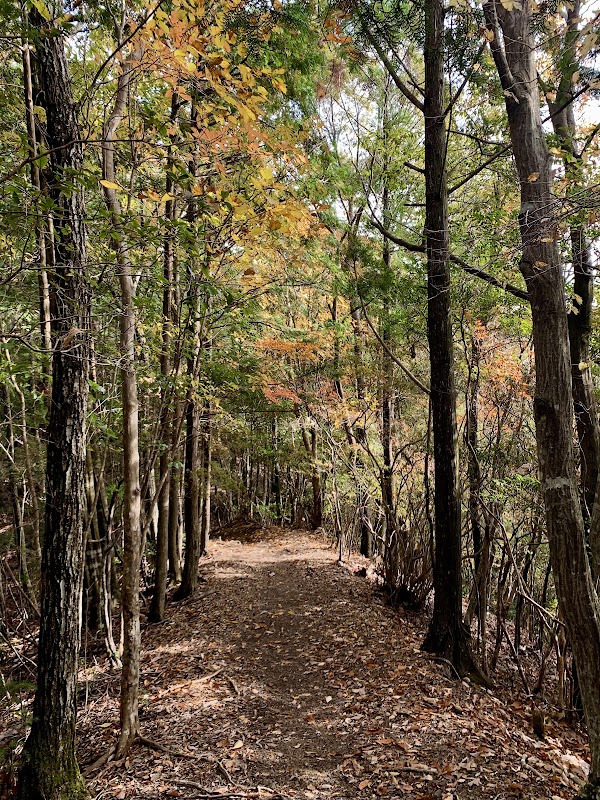Walking History: Exploring the Ancient Kumano Kodo Pilgrimage Trails of Tanabe, Wakayama
The Kumano Kodo trails near Tanabe, Wakayama, offer an immersive pilgrimage experience through ancient forests and sacred sites that have drawn travelers for over a thousand years. Combining physical challenge with deep cultural resonance, these trails shape a journey both outdoors and inward.
Carry Sufficient Water
Rural sections have limited water refill points. Packing at least 2 liters is crucial, especially in warmer months.
Wear Durable, Grippy Footwear
Expect varied terrain including slippery moss and loose stone. Trail runners or hiking boots with strong soles perform best.
Start Early to Avoid Crowds
Begin your hike before 8 a.m. to experience quieter trails and avoid the midday heat, especially on popular segments like Nakahechi.
Prepare for Sudden Weather Changes
Mountain weather shifts quickly; pack a lightweight rain jacket and check local forecasts before your trip.
Walking History: Exploring the Ancient Kumano Kodo Pilgrimage Trails of Tanabe, Wakayama
The Kumano Kodo trails carve through the rugged hills and dense forests around Tanabe, Wakayama, inviting hikers to engage with a landscape fiercely ancient and quietly alive. These pilgrimage paths, traveled for over a millennium, connect sacred shrines set deep within Japan’s southern Kii Peninsula. As you step onto trails of uneven stone and earth, you enter a dialogue with the environment — gnarled cedars whisper histories as rivers urge you onward with watery persistence.
Starting in Tanabe, the gateway to Kumano Kodo, hikers can choose from routes ranging from moderate day hikes to multi-day journeys that demand stamina and intention. The Nakahechi route, the most popular, spans about 38 kilometers, weaving through elevation gains of roughly 1,000 meters. Expect thick forests where sunlight plays tricks through swaying branches and occasional clearings presenting sweeping views of valleys that hold onto mist like a secret.
Terrain varies from worn stone steps to soft moss-covered paths, frequently damp and slippery, especially after rainfall. It’s a physical engagement that encourages attentiveness — your boots gripping the earth, your pace in sync with a pulse as old as the pilgrimages themselves. Accompanying each step are shrines and small village towns offering glimpses into centuries-old spiritual practices still alive today.
Preparation is key. Adequate hydration is non-negotiable; several rural sections provide limited water sources, so carrying enough is crucial. Footwear should be sturdy yet flexible to handle rocky ascents and narrow ridgelines. Timing your hike outside Japan’s humid summer (July–August) or the wet season ensures safer footing and more comfortable conditions.
Whether navigating fog-shrouded forests or sun-dappled clearings, expect nature to assert itself powerfully. Rivers rush with purpose, seemingly daring you to keep pace; the wind shifts leaves with a restless energy, marking your journey with sound and motion. This isn’t a path to conquer but a setting to respect—a site where history, spirituality, and nature intersect in every breath, every step.
For those ready to meet the old roads with clear eyes and steady feet, Kumano Kodo offers an adventure steeped in meaning and natural grandeur. It’s a challenge of body and spirit, a walk through Japan’s living past that rewards those patient and prepared enough to embrace its fierce tranquility.
Nearby Trips
All Adventures
Boat Charters
Water Activities
Adventures near Tanabe
Discover the unique and memorable adventures that make Tanabe special.
Frequently Asked Questions
How long does it take to hike the main Kumano Kodo Nakahechi route?
Most hikers complete the roughly 38 km Nakahechi route over 2–4 days, depending on pace and rest stops.
Is the Kumano Kodo suitable for beginners?
While some sections are beginner-friendly, overall moderate fitness and proper preparation are recommended due to elevation changes and trail conditions.
Are there lodging options along the trail?
Yes, traditional inns (minshuku) and lodges are available in villages along the route, offering authentic experiences and a place to rest.
What spiritual sites can be visited on the Kumano Kodo?
Three Grand Shrines—Kumano Hongu Taisha, Kumano Nachi Taisha, and Kumano Hayatama Taisha—are key pilgrimage destinations accessible via various trail segments.
What safety precautions should hikers take?
Hikers should carry sufficient water, dress in layers, watch for slippery terrain, and have a map or GPS as cell coverage may be unreliable.
When is the best time to visit for fewer crowds?
Visiting in early spring or late fall reduces the number of hikers and avoids the summer heat, offering a quieter trail experience.
Recommended Gear
Sturdy Hiking Boots
Supports ankles on uneven terrain, with grip to handle damp and rocky paths.
Lightweight Rain Jacket
Protects from frequent rain showers and sudden weather changes common on mountainous trails.
Hydration System or Water Bottles
Keeps you hydrated during long stretches with limited water sources.
Trekking Poles
Helpful for balance and reducing strain on knees during steep descents.
Local Insights
Hidden Gems
- "The Kumano River viewpoint near Koguchi offers striking sunset views seldom crowded with tourists."
- "Small roadside shrines along lesser-used paths provide quiet moments of reflection away from the main trail."
Wildlife
- "Macaque monkeys occasionally cross paths at dawn or dusk."
- "Woodpeckers tap rhythmically in old growth cedars, while deer quietly browse underbrush."
History
"The Kumano Kodo has been a sacred pilgrimage route for over 1,000 years, connecting ancient shrines linked to Japan’s nature-based Shinto and Buddhist traditions."

